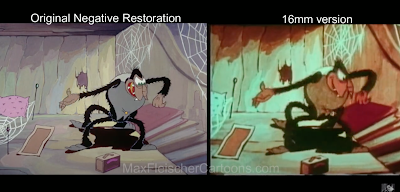There is good news for fans of the Gunsmoke radio program! One of the five “lost” episodes was recently discovered and made available. Never heard since the initial broadcast, episode #10, titled “The Ride Back,” was originally broadcast on June 28, 1952. The episode contains a story not commonly expected on the program, consisting mainly of dialogue between William Conrad and Lawrence Dobkin. Matt Dillon encounters a number of dangers over a period of three days, while transporting a prisoner, Leeds Martin, to Dodge. The nearby Cheyenne are returning from a raid and make an attempt to ambush Dillon and Martin. There are no other speaking roles, not even from the Cheyenne, but the deputy, Chester Proudfoot, played by Parley Baer, makes a brief appearance at the very end of the story.
 |
The radio cast of Gunsmoke, from left to right:
Harry Bartell, Parley Baer, William Conrad, Georgia Ellis |
Stewart Wright, a historian and author of a fantastic Gunsmoke broadcast log, believed that the title (“The Ride Back”) was assigned by producer Norman Macdonnell, months after the broadcast, when the producer was organizing scripts and recordings for some purpose such as managing series continuity. In short, he believed that while there were official script titles, the earliest of radio scripts may have just had numbers and not titles.
Most of the Gunsmoke performances were recorded on transcription discs (later recording tape starting the mid-1950s) and not broadcast live, but this did not prevent a handful of episodes to become “lost” over the years. Fans of the radio program know how a number of episodes are still missing and the confusion that happened over the years with AFRS rebroadcasts, repeat performances with different cast of the same scripts over the years, and other confusions.
Collector and historian Keith Scott offers more specific details: "Gunsmoke was pre-recorded only nine times in 1952, then the shows were aired live continuously from show #25 until show #106. From show #107 (1954-05-08) until the end of the series in June 1961, the episodes were pre-recorded on tape. Interestingly, eight 1952 shows were 'pre-cut' [pre-recorded] several days or even weeks before they were broadcast. ‘The Ride Back,’ however, was recorded exactly one day before its air date."
The fact that “The Ride Back” recording is an aircheck from a Los Angeles radio station that was only recently found and identified probably indicates that this particular recording was never in the main Gunsmokevaults/archive. Classic radio collectors are lucky that someone, for an unknown reason, arranged for private recording of the actual broadcast. Because it is an aircheck, the sound quality is representative of the way people heard it in their homes or their vehicles. It does not have the crisp sound or “snap” that in-studio transcriptions have (some of the surviving Gunsmoke episodes sound almost magical, with a rich full sound, capturing the subtle background sound effects that made the series so famous and beloved).
According to historian Joe Webb: “Nonetheless, it is a very good recording, which implies it was done on professional equipment and not on a home recorder such as an office dictation machine that was prone to low fidelity and higher background noise.”
The other important source of Gunsmoke recordings from 1957 to the end of the series is the Armed Forces Radio and Television Service. AFRTS was still supplying 16" and 12" records of radio drama programs to their radio stations around the world for broadcast to service personnel and their families. The early years of Gunsmoke were well-preserved with network transcriptions and the final years with combinations of surviving network tape recordings, professional airchecks, home recordings, and AFRTS. With the addition of this recording of “The Ride Back,” only four Gunsmoke broadcasts remain to be found.
LOST EPISODES
Ben Thompson (a fragment exists) May 3, 1952
Dodge City Killer (May 17, 1952)
Jailbait Janet (June 14, 1952)
Heat Spell (June 21, 1952)
A complete broadcast of 1952-09-27 The Railroad is still being sought; the unedited drama portion exists without musical bridges and announcements.
This is the first recording of a missing Gunsmoke broadcast to be found since 2014. “Homely Girl,” broadcast on CBS on June 19, 1960, and written by Kathleen Hite, was found as an AFRTS disc by collector and radio historian Ian Grieve in Australia. (It is labeled AFRTS #399 of Gunsmoke.) “The Ride Back” was found in reels of late Los Angeles area classic radio program collector Jim Fox. The recordings came to the attention of the Old Time Radio Researchers group through the efforts of Jim Stephenson in the hopes that “The Ride Back” and others would be shared and enjoyed with old time radio fans and collectors.

A link to download and listen to the recording is provided below. What makes this particular episode unique is the fact that the story was adapted into a movie, released theatrically in 1957, titled The Ride Back. In that movie, William Conrad played the role of a lawman taking his prisoner back to jail over a period of a few days’ travel. While he is not referred to as Marshall Matt Dillon in the movie, fans of radio’s Gunsmoke have always enjoyed the movie because it provided us with an opportunity to know what it would have been like had Conrad reprised his radio role for the television series.
https://u.pcloud.link/publink/show?code=XZ85RLVZ64qzuGuDDq89l5VSqaFQzmnzKxrX&fbclid=IwAR0Mz99fll_-UHU_eZie3O4gUoalwgIac6UQFhdvEU5qtMX_xNmhqCuWI38







